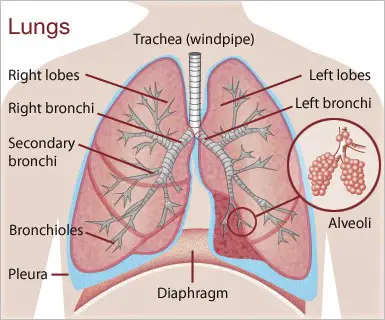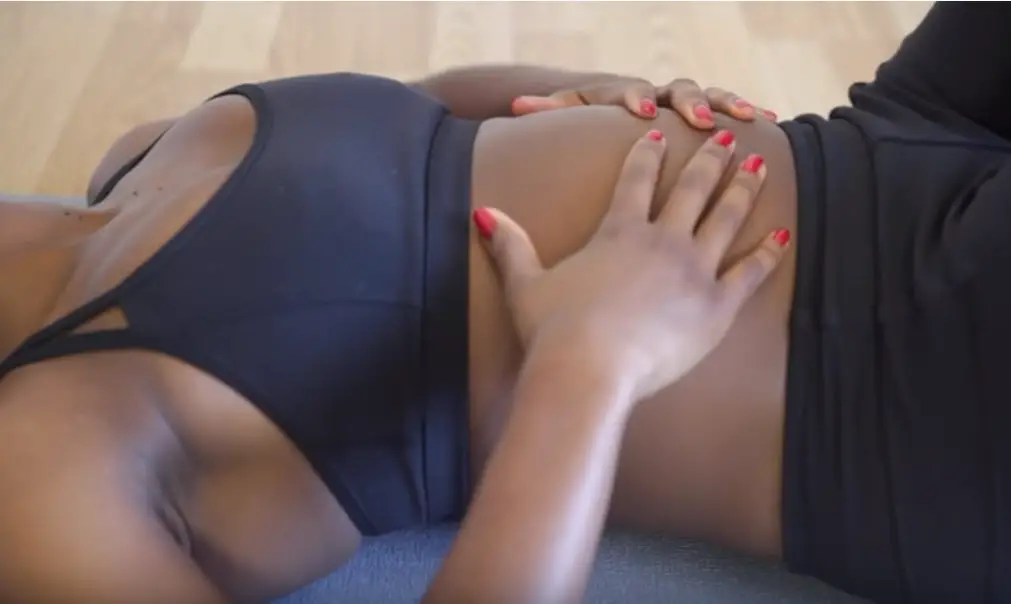
Deep breathing, called “diaphragmatic breathing,” maximizes the circulation of oxygen to our body’s cells.
Who doesn’t know how to breathe? Most of us think we do. But the majority of us do not breathe deeply enough. And by that we mean we don’t use our diaphragms to breathe. Why is that so important?
All animals, including humans, require oxygen to survive. We breathe in oxygen made by plants and breathe out carbon dioxide as a waste product. The deeper we breathe, the more oxygen we circulate throughout our bodies. If we breathe in a shallow manner, without using our diaphragms, a large percentage of the cells in our bodies lack what they require to survive.
Shallow breathing also means that we cannot properly expel waste. This creates an environment for disease to thrive and for our overall health to suffer.
Are you breathing properly?
Take this simple test:
- Lie on your back on a bed or carpet with your knees bent.
- Place one hand on your chest and the other on your stomach.
- Breathe as you typically would—it’s very likely that only your chest will rise.
- Now make an effort to breathe as deeply as you can. Inhale and picture the breath starting in your stomach, progressing to your chest and then to your throat. You should feel your stomach contract as you take the breath.
- Exhale that breath and picture it travelling from your throat to your chest to your stomach. You should feel your stomach expand as you force air into it during the exhalation.
- When taking a breath, try to make the hand over your stomach rise more so than the hand on your upper chest.
What’s the role of the diaphragm?
Diaphragmatic breathing is a type of breathing exercise that helps strengthen your diaphragm, an important muscle that helps you breathe. The diaphragm, a dome-shaped muscle at the base of the lungs, plays an important role in breathing.
When you inhale, your diaphragm contracts (tightens) and moves downward. This creates more space in your chest cavity, allowing the lungs to expand. When you exhale, the opposite happens — your diaphragm relaxes and moves upward in the chest cavity.

Meet your alveoli
When you inhale, air flows into the lungs to fill tiny air sacs called alveoli. Blood circulates around these air sacs through small arteries and veins. When the blood vessels meet the alveoli, the oxygen moves into the bloodstream and carbon dioxide passes out of the blood to be exhaled. Each if us has about 480 million alveoli, located at the end of bronchial tubes. When you breathe in, the alveoli expand to take in oxygen. When you breathe out, the alveoli shrink to expel carbon dioxide.
Although they’re microscopic, alveoli are the workhorses of your respiratory system. If you are breathing shallowly, the air isn’t pulled deeply enough into the lungs for optimal oxygen absorption. Since 70% of the alveoli exist at the base of the lungs, shallow breathing (not using the diaphragm) creates a very poor exchange rate between oxygen in and carbon dioxide out.
What if I have always been a shallow breather?
If you exercise regularly or meditate or practice yoga, you probably are using your diaphragm to breathe, even though you may not be aware of it. But if your exercise is mild or sporadic (or never), you may well have gotten into the habit of shallow breathing.
Relearning how to breathe from the diaphragm benefits everyone. It is particularly important now with respiratory diseases in circulation. Healthy lungs might be your best defense.
The beneficial exchange of incoming oxygen for outgoing carbon dioxide (achieved through deep breathing) also slows the heartbeat and can stabilize or even lower blood pressure.
In addition to maximizing your lung capacity, diaphragmatic breathing can help you achieve a state of total relaxation. It is possible to slow your heartbeat and lower your blood pressure simply by focusing on the sound of your deep breathing.
Learn these deep breathing techniques
Crossed-Arm Technique
- Start in a comfortable seated position with proper posture. Cross your arms in your lap.
- Bring your arms up and over your head. As you do so, take a deep breath into your abdomen as described above.
- When you exhale, let your arms come back down to the starting position.
Bringing your arms above your head helps expand your chest, allowing your diaphragm to properly inflate your lungs.
Butterfly Technique
The butterfly technique is similar to the crossing technique. This exercise is designed to help spread and stretch the muscles of your chest.
- Start the butterfly by sitting up straight with your hands behind your head.
- Once in position, take a deep breath with your diaphragm
- At the same time, keep your hands on the back of your head and spread your elbows apart.
- As you exhale, lean toward your knees and bring your elbows back together.
- Sit upright again and spread your elbows as you breathe in.
Pursed-Lip Breathing
Pursed-lip breathing is oftentimes used to enhance the breathing exercises described above. According to The Cleveland Clinic, this exercise is the simplest way to control shortness of breath.
- Take a belly breath through your nose and slowly exhale through pursed lips.
- Imagine that you are blowing on a candle flame—not hard enough to blow it out, just enough to make it flicker.
This technique ensures that your airway stays open longer, allowing for easier breathing. It can be done with any diaphragmatic breathing exercise.
Video: How to Practice Diaphragmatic Breathing for Beginners

CLICK HERE to watch Kai Simon’s video, The Ultimate Relaxation Technique: How To Practice Diaphragmatic Breathing For Beginners.
* * *
You may also like
- The 10 super health benefits of black tea for women over 60
- Women over 60 need more protein in the morning. We explain why.
- How to boost your immunity if you’re over 60
Go to the BLUE HARE home page for more articles for fabulous women
